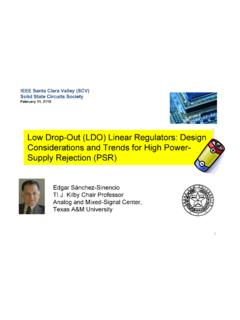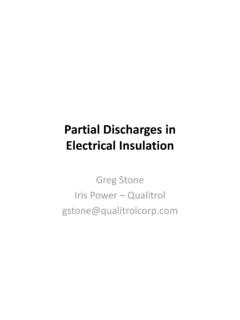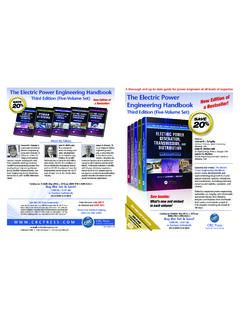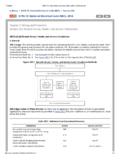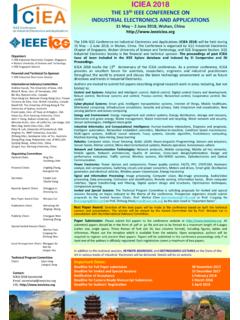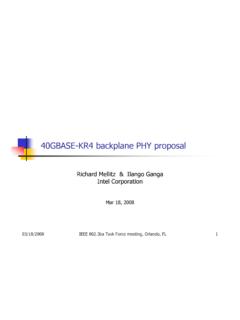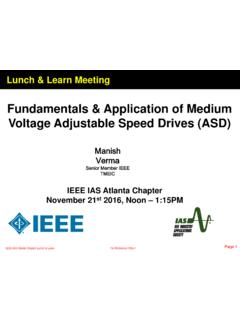Transcription of 2. Generator Basics IEEE
1 Generator BasicsBasic Power Generation Generator Arrangement Main Components Circuit Generator with a PMG Generator without a PMG Brush type AREP PMG Rotor Exciter Stator Exciter Rotor Main Rotor Main Stator Laminations VPIG enerator Arrangement Most modern, larger generators have a stationary armature (stator) with a rotating current-carrying conductor (rotor or revolving field). Armature coilsRevolving field coilsMain Electrical Components: CutawayMain Electrical Components: Diagram The regulator rectifies this voltage and applies DC to the exciter stator.
2 The DC voltage appears in the main revolving field and induces a higher AC voltage in the main stator. As the PMG rotor rotates, it produces AC voltage in the PMG : Generator with a PMG This voltage is sensed by the regulator, compared to a reference level, and output voltage is adjusted accordingly. A three-phase AC voltage appears at the exciter rotor and is in turn rectified by the rotating : Generator without a PMG As the revolving field rotates, residual magnetism in it produces a small ac voltage in the main stator.
3 The regulator rectifies this voltage and applies dc to the exciter stator. A three-phase AC voltage appears at the exciter rotor and is in turn rectified by the rotating rectifiers. The magnetic field from the rotor induces a higher voltage in the main stator. This voltage is sensed by the regulator, compared to a reference level, and output voltage is adjusted : Brush Type (Static) DC voltage is fed directly to the main revolving field through slip rings. Power source for the main revolving field can be very large and expensive.
4 Requires brush maintenance. Common in variable speed ringsExternal Source(-)(+)AC outStator (armature)Rotor (field)Circuit: AREP Auxiliary winding regulation excitation principle. Secondary winding in the main stator provides power to the voltage Rotor Is a field that induces voltage in the PMG stator. Poles are permanent magnets. Mounted on the shaft with the main rotor. Optional (benefits to be discussed later). PMG Stator Is an armature that provides power to the regulator Induced by the PMG rotor.
5 Typically has random-wound coils in a laminated steel core. Various configurations: Wound cores in a frame Wound cores with no frame Combined with the exciter stator in one frame Mounted on an end bracket (opposite side of prime mover). OptionalExciter Stator Is a field that induces voltage in the exciter rotor. Typically powered by the regulator. Typically has random-wound coils in a laminated steel core. Various configurations: Wound cores in a frame Wound cores with no frame Combined with the PMG in one frame Mounted on an end bracket (opposite side of prime mover).
6 Exciter Rotor Is an armature that provides rectified power to the main rotor (revolving field). Induced by the exciter stator. Three-phase high frequency AC output. Typically has random-wound coils in a laminated core. Mounted on the shaft with the main Mounted on the exciter (as in previous slide) or PMG. Has diodes that full wave rectify the three-phase (three separate voltage) exciter armature AC current to DC before it enters the main rotor. Leads connect to the main field (rotor)ExciterarmatureRectifierMain fieldResultant DC waveMain Rotor Is a field that induces voltage in the main stator.
7 Powered by the exciter rotor. Connected to the (+) and (-) rotating rectifier terminals. Coils are connected in series around a core. Laminated core is typical Solid core with large rotors Current flow is directed in a clockwise and CCW rotation to create north and south poles. Pressed on a shaft.+-NSSNTo the rotatingrectifier assemblyMain Rotor: Types Cylindrical SalientMain Rotor: LayoutExciter rotor (armature)RectifierPMGrotor (field)Main rotor (field)Exciter rotor (armature)Main rotor (field)RectifierSelf excitedPMG excitedMain Rotor: Frequency, RPM, Pole #Frequency= RPM number of poles120If you have a prime mover that runs at 1000 RPM and you wanted 50 Hz, you would need a Generator with how many poles?
8 50 Hz 1201000 RPM= 6 polesMain Rotor: Frequency, RPM, Pole # # ofPolesRPMHz4180060415005061200606100050 89006087505010720601060050 Main Rotor: Damper Cage Also called Amortisseur windings. Copper bars through the pole faces and shorted together by the end plates. Standard for all but traction generators , solid rotors. Has a very short time constant (effect expressed in datasheets as X d). Helps with parallel operation Helps with load-induced harmonics (non-linear loads). Helps reduce initial voltage dip during motor Rotor: Magnetism Magnetic flux paths ( flow of magnetism) for a Generator operating at PFMain Stator Is the main armature, the component that delivers power.
9 Windings (copper conductors) are either form-wound coils or random-wound coils fitted in core slots. Core is laminated steel housed in a metal frame. Typically has three phases (three separate windings).Main Stator: Coils and Slots The number of turns and cross section are specific to each frame size, slot combination or design, and voltage. Coils typically span into two slots in the core, so there are two coils per slot. Pitch = (span -1) the number of rotor poles / total # of Stator: Coil TypesForm woundRandom woundMain Stator: Coil TypesForm woundRandom woundAdvantages, disadvantages, applications discussed later.
10 Main Stator: High-Voltage Coil Use with voltages above 6000 V Has conductive and semi-conductive tapeMain Stator: Coil Connection Series circuit - coils connected one after another. Voltage additive for each coil. Current capacity is that of any one coil Parallel circuit - coils connected in parallel Voltage across group is voltage across any one coil. Current capacity is additive for each Stator: Three Phase Three windings. For each phase, there is one group (one or more coils) for each rotor pole.
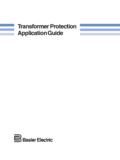
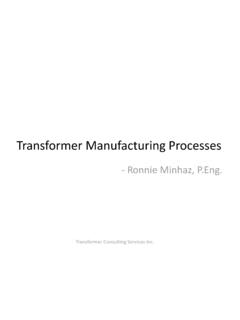
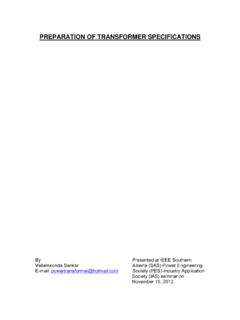
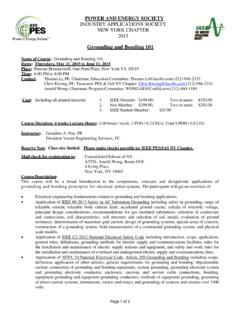

![IEEE 383 White Paper (002).pptx [Read-Only]](/cache/preview/0/2/e/4/a/4/f/b/thumb-02e4a4fb7dcfb58ad21178aee0a30554.jpg)
